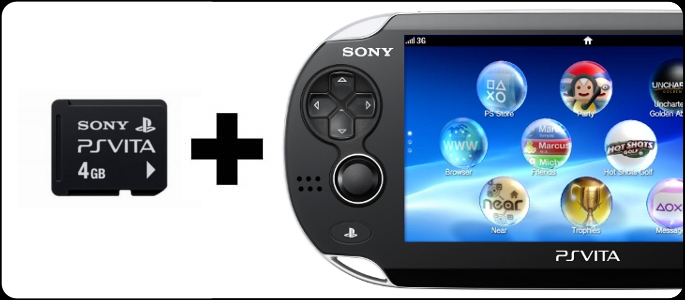With the high price of the PlayStation Vita’s memory stick, we take a look at whether you need the flash card to use the handheld, and what the added cost means for gamers.
Sony’s decision to stick to a proprietary flash format was initially met by criticism due to the simple fact that gamers didn’t like the idea of purchasing yet another memory card. However, when it was revealed that the cards will cost $24.99 for a 4GB Memory Card, $39.99 for 8GB, $69.99 for 16GB and $119.99 for 32GB, Sony immediately drew flak for their incredibly steep price. In comparison, a 4GB MicroSDHC card costs as little as $4.99 and a 32GB one costs $35.99.
As a defense, Sony stated that they wanted every Vita owner to have the same brand of memory, so it is “an even playing field” for gamers – even though load speeds on different brands of MicroSDHC cards is less than negligible. Another reason given was that it was an anti-piracy move, although it’d be naïve to think that the memory stick will manage to prevent piracy for a very long time, with most electronic devices hacked within weeks of launch. But even if you accept that milliseconds of load is important, or that the memory stick will be able to fend off pirates, neither excuse explains the price. Proprietary formats are generally more expensive due to the fact that less products are produced, but not by so much. For example, the NVG card used to store Vita retail games is also proprietary, yet must be cheap to produce, otherwise the games wouldn’t make a profit.
The move is in direct contrast to Sony’s openness with the PS3, which is repeatedly praised for it’s ability to use any 2.5″ SATA HDD, and is actually more similar to Microsoft’s decision to charge well above average for their proprietary hard drives. But even Microsoft’s business strategy was preferable – you don’t need to own a HDD for 99% of retail games – but on the Vita, a memory card is much more important. The biggest launch title for the Vita, Uncharted: Golden Abyss, requires a memory card simply to save the game, along with several other games. That means that if you buy a normal Vita without a card, you will essentially be unable to play the game. The sad fact is that the average gamer won’t know this, and neither will gift-givers, meaning that the first emotion countless Vita owners feel when they try and play their new handheld will be anger and confusion. Especially when they realize the price of the memory stick.
If you plan on buying a PlayStation Vita, you will have to buy a memory stick just to play all the retail games, so the true cost of the Vita is above the advertised price of $249. Sony has basically sold a car without one of the wheels, just to make it appear cheaper.
Are you put off by the expensive, yet necessary, memory cards? Let us know in the comments below.








